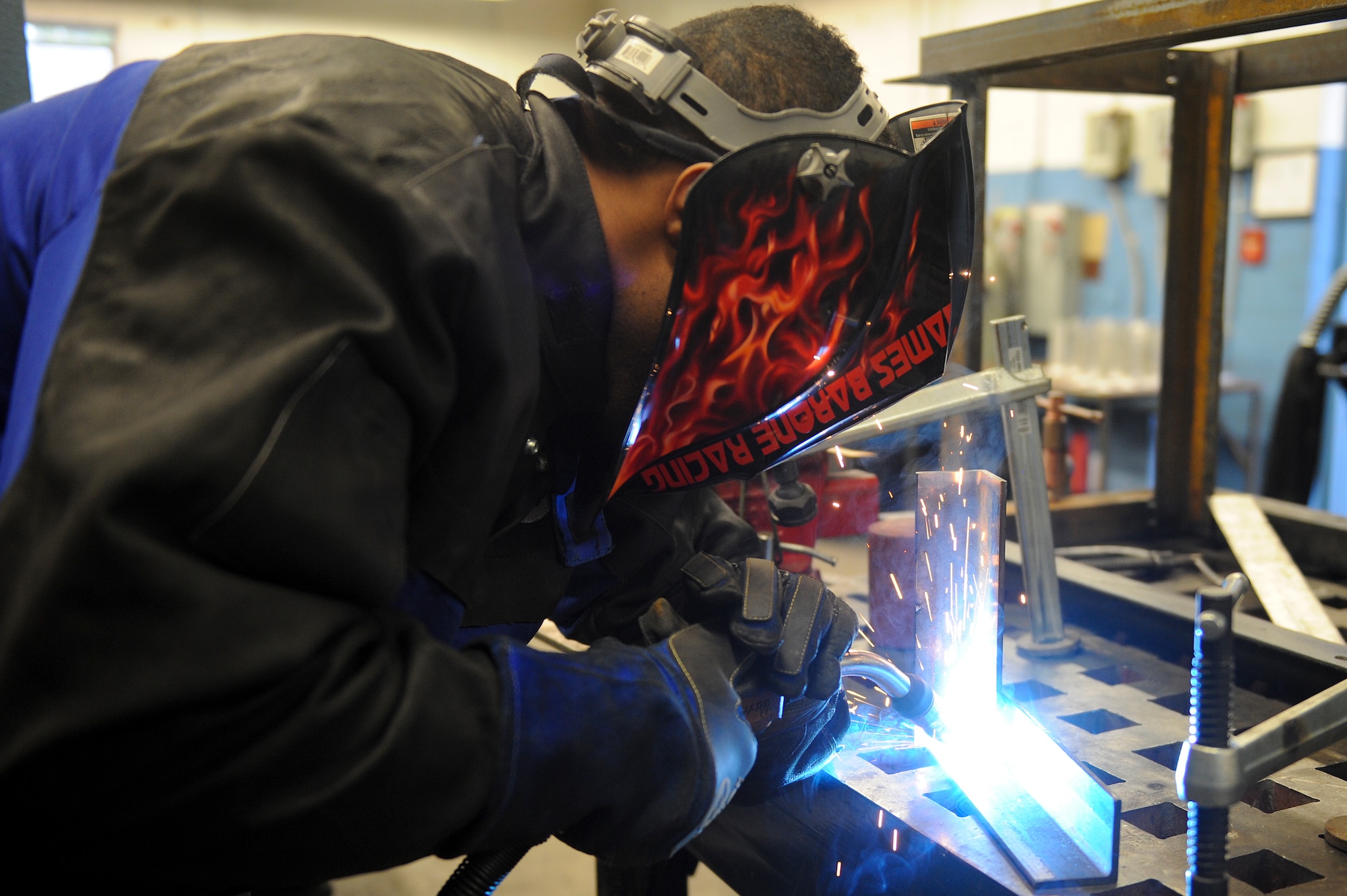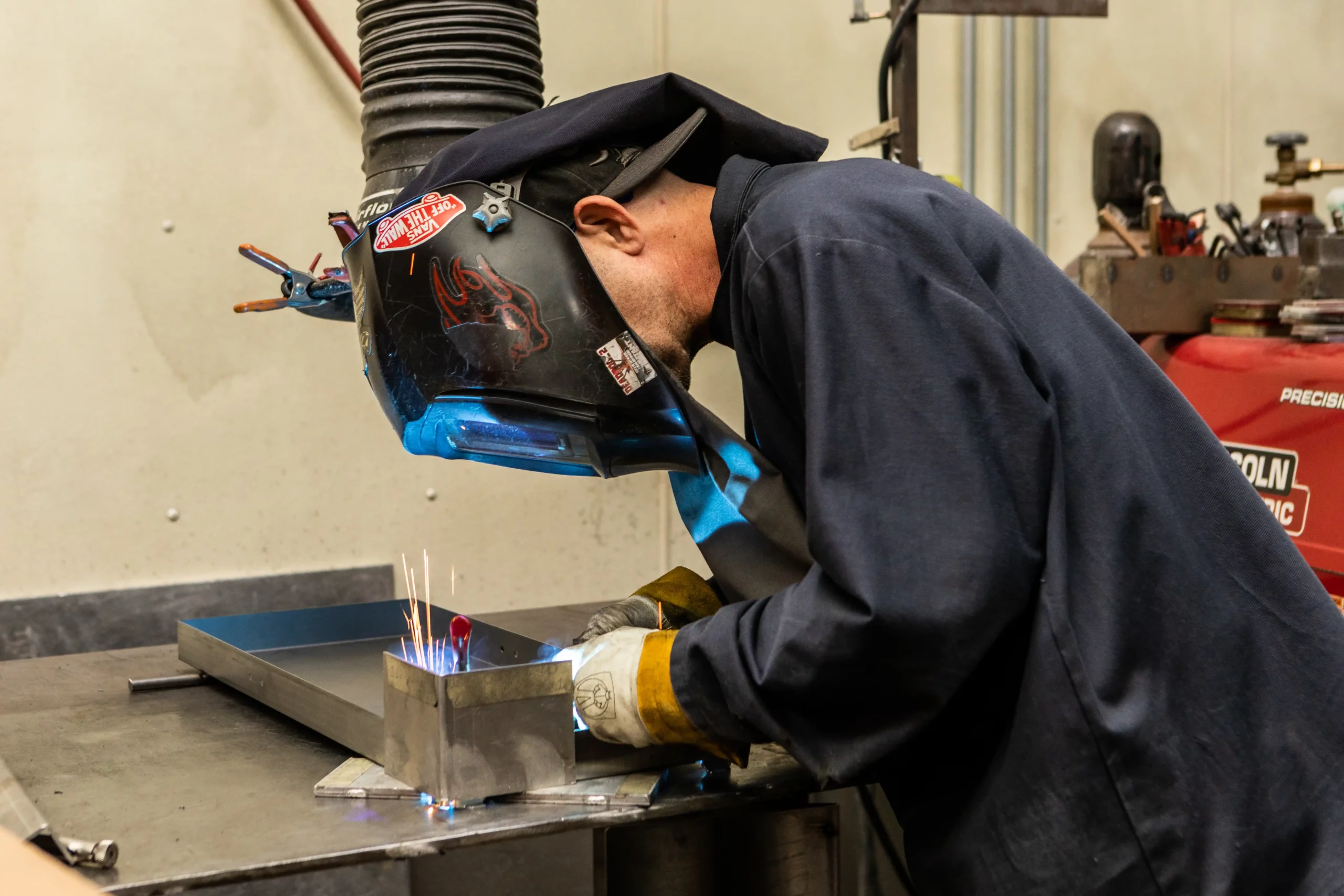All About Welding: Key Insights Into Techniques and Ideal Practices for Success
Welding encompasses a selection of strategies, each suited for details materials and applications. Recognizing these approaches, such as GMAW, SMAW, and TIG, is necessary for achieving optimal results. In addition, the appropriate tools and security practices can not be ignored. As prep work and fixing play critical duties in the welding procedure, understanding these components can substantially enhance the top quality of the last product. What are the crucial elements that assure an effective weld?
Recognizing Different Welding Strategies
Welding strategies incorporate a selection of approaches, each suited to specific applications and products. Among one of the most typical techniques are Gas Steel Arc Welding (GMAW), Protected Steel Arc Welding (SMAW), and Tungsten Inert Gas Welding (TIG) GMAW, likewise referred to as MIG welding, is preferred for its speed and convenience, making it excellent for thin products. SMAW, or stick welding, is favored for its simpleness and performance in outside environments, specifically with thicker metals. TIG welding provides accuracy and control, making it appropriate for intricate work and non-ferrous metals (Montana Mobile Welding and Repair Fabrication). Each strategy has its special advantages and considerations, permitting welders to select the best technique based upon the project's demands, material kind, and desired outcomes. Recognizing these techniques is important for successful welding
Necessary Welding Equipment and Tools
While different welding strategies need particular abilities, the ideal tools and tools are similarly essential for accomplishing quality results. Important welding tools consists of welding machines, which differ depending on the technique-- such as MIG, TIG, or stick welding. Protective equipment, consisting of helmets, aprons, and gloves, warranties safety and convenience during the procedure. On top of that, clamps and fixtures aid secure products in position, ensuring accuracy in welds. Consumables like welding poles, wire, and shielding gas are additionally important elements that influence the quality of the weld. Devices such as cutters and grinders assist in surface prep work and post-weld finishing, contributing to a professional outcome. Purchasing top notch devices eventually improves the efficiency and performance of welding jobs.
Security Practices in Welding
Correct safety methods are important in the welding market to protect employees from potential risks. Welders must wear proper personal safety devices (PPE), including safety helmets with proper shading, handwear covers, and flame-resistant clothes. Ample ventilation is crucial to decrease direct exposure to unsafe fumes and gases produced during the welding procedure. Additionally, workers ought to be learnt the proper handling of welding devices to stop mishaps. Fire security actions, such as keeping flammable products away from the welding area and having fire extinguishers readily available, are essential. Regular inspections of tools and work areas can assist identify potential dangers prior to they bring about accidents. By sticking to these safety and security practices, welders can develop a more secure working environment and lessen risks related to their trade.
Preparing Products for Welding
Preparing products for welding is an important step that greatly influences the quality and stability of the end product (Belgrade Welding). Correct prep work entails cleaning the surfaces to remove contaminants such as rust, oil, and dirt, which can compromise the weld. Methods such as grinding, sanding, or using solvents are commonly employed to attain a clean surface. Additionally, making certain that the materials fit together well is important; spaces can lead to weak welds. It's additionally crucial to take into consideration the placement and positioning of the parts, as this will certainly impact the ease of welding and the last result. Choosing the ideal filler product and guaranteeing compatibility with the base steels is necessary for accomplishing solid, resilient welds.
Tips for Getting High-Quality Welds
Attaining high-quality welds needs interest to information and adherence to best techniques throughout the welding process. Correct joint prep work is necessary, ensuring surface areas are totally free and tidy from contaminants. Picking the suitable filler material and welding strategy based upon the base steels is essential for suitable bonding. Keeping consistent traveling rate and angle while welding can protect against issues and promote uniformity. In addition, regulating heat input is vital; too much warmth can bring about bending and weakened joints. If necessary, regularly inspecting the welds during the process allows for immediate modifications. Ultimately, using ideal post-weld therapies, such as cleaning and anxiety alleviation, can improve the durability and honesty of the weld, inevitably making certain an effective outcome.
Repairing Common Welding Issues
Welding typically presents obstacles that can impact the quality and honesty of the last item. Usual issues such as porosity, irregular weld beads, and overheating can emerge, each needing specific repairing methods. Understanding these troubles is crucial for welders to improve their skills and attain optimal outcomes.
Porosity Troubles Discussed
Although porosity can frequently be overlooked, it stays an essential concern in welding that can endanger the stability of an ended up item. Porosity describes the presence of little gas pockets within the weld grain, which can lead and deteriorate the joint to premature failing. This problem usually arises from contaminants, wetness, or inappropriate protecting gas insurance coverage during the welding process. To minimize porosity, welders should validate that the base materials are dry and tidy, utilize suitable protecting gases, and keep consistent welding criteria. On a regular basis checking the devices and atmosphere can additionally assist recognize possible concerns before they materialize in the weld. Addressing porosity effectively is crucial for achieving strong, long lasting welds that meet quality standards.

Irregular Weld Beads
Inconsistent weld grains can substantially impact the high quality and stamina of a completed product. Numerous variables add to this problem, including improper traveling speed, inaccurate amperage setups, and irregular electrode angles. When the welder relocates too swiftly, a grain might appear narrow and lack penetration, while relocating also gradually can trigger extreme build-up. Furthermore, making use of the wrong amperage can lead to either damaging or too much spatter, both of which concession weld from this source stability. The welder's strategy, such as irregular torch movement, can also cause unequal bead look. To mitigate these issues, welders ought to concentrate on keeping consistent, regulated movements and guaranteeing correct equipment setups to achieve uniformity in their welds. Uniformity is essential to attaining trusted and strong welds.
Getting Too Hot and Bending Issues
Too much warmth throughout the welding process can bring about significant getting too hot and warping issues, affecting the architectural honesty of the work surface. These issues frequently show up as distortion, which can jeopardize positioning and fit-up, making more setting up testing. Aspects adding to overheating include the choice of welding parameters, such as voltage and take a trip rate, as well as the type of material being welded. To mitigate these problems, welders need to keep regular travel rate and suitable heat input while monitoring the work surface temperature level. Furthermore, pre-heating or post-weld heat therapy can aid alleviate stresses triggered by rapid air conditioning - Belgrade Welding. Routine assessment and adherence to ideal techniques are important in stopping overheating and making certain the durability and reliability of welded structures
Regularly Asked Inquiries
What Are the Profession Opportunities in the Welding Industry?
The welding market uses varied career chances, consisting of placements as welders, instructors, inspectors, and designers. Professionals can operate in manufacturing, building and construction, aerospace, and auto fields, taking advantage of solid need and affordable salaries in different check duties.
How Can I Improve My Welding Speed Without Compromising High Quality?
To boost welding speed without sacrificing top quality, one ought to practice efficient strategies, maintain devices, maximize setups, and enhance hand-eye sychronisation. Routine training and seeking comments can additionally considerably add to attaining much faster, top quality welds.
What Accreditations Are Offered for Welders?
Countless accreditations exist for welders, consisting of those from the American Welding Society (AWS), the National Facility for Construction Education and Research (NCCER), and different industry-specific companies. These qualifications boost employability and demonstrate ability proficiency.
Just How Does Welding Influence the Characteristics of Metals?
Welding influences the homes of metals by altering their microstructure, which can result in changes in hardness, ductility, and stamina. Warmth input and air conditioning prices throughout the process considerably influence these product attributes.
Can I Weld Dissimilar Metals Together?
